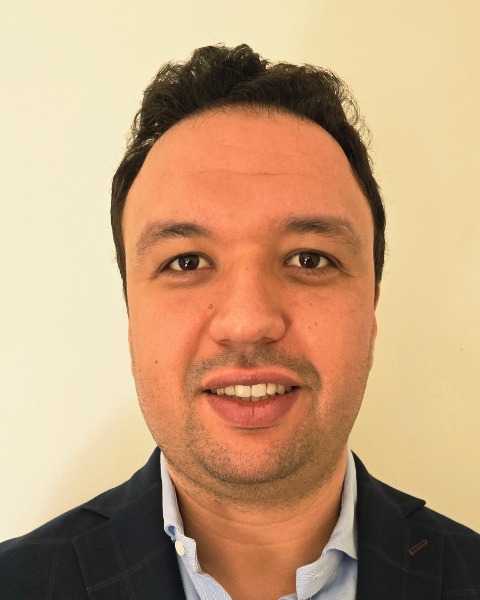Cardiac Surgery
POSTER SESSION #3
P032 - THE ROSS PROCEDURE IN ADULT PATIENTS : A COMPARISON OF OUTCOMES AND THE EVOLVING PROFILE OF THE AUTOGRAFT, WITH AND WITHOUT PREVIOUS CARDIAC SURGERY
Saturday, October 25, 2025
12:30pm - 1:30pm ET
Location: Board 4

Nabil Ajmi, M.D
Cardiac surgery fellow
Institut de Cardiologie de Montréal
Montréal, Quebec, Canada
Presenting Author(s)
Background: The Ross procedure is delivering excellent outcomes and there is an expansion of its use its use to treat aortic valve disease in young adults. The aim of this study was to compare outcomes of patients receiving Ross procedure as a first or second intervention and to evaluate the evolving profile of the annulus and the sinus of Valsalva in both groups according to underlying disease
METHODS AND RESULTS: We included in this single centre retrospective study, a total of 686 patients, who underwent, Between 2011 and 2023, the Ross procedure: 615 patients with Ross procedure as first aortic valve surgery: primary Ross (PR) and 71 patients with Ross procedure as redo surgery on the aortic valve: secondary Ross (SR).
Mean follow up period were similar in both groups with 4.6 years 3.5 in PR group and 4.8 years 3.3 years in SR group (P=0.57).
Baseline characteristics showed a younger age at time of surgery in the SR group (PR 50.0 11.1 et SR 39.2 13.1 (p < 0.001), and a significant higher incidence of pure aortic regurgitation in the SR group (35.2%) compared to the other group (12.7%) (P=0.02).
There were a significant higher rate of associated procedures in SR group with higher CBP and cross clamping time (P < 0.05)
The primary end point was freedom from any reinterventions on autograft and homograft: At 5 years, 97.9% for PR and 92.7% for SR groups without significant difference between both groups.
There was no significant difference in the freedom from AR ≥2 between both groups.
Concerning the progression Valsalva sinus in both groups: we observed a significant difference in favor a PR for freedom from dilatation of the sinus of Valsalva > 40 mm.
Subgroup analysis with comparison of underlying disease (aortic stenosis and regurgitation) showed a significant higher freedom from sinus of Valsalva dilation >40 mm in PR between in the subgroup of aortic stenosis while there was no difference in the SR group.
Conclusion: In this study, with significant higher prevalence of aortic regurgitation in the SR group, both groups demonstrated excellent mid-term freedom from reinterventions and valve function. Freedom from Valsalva diameter dilatation was significant only in PR group in favor of aortic stenosis which may support the hypothesis of protective character of fibrotic tissues following redo surgery for Ross
METHODS AND RESULTS: We included in this single centre retrospective study, a total of 686 patients, who underwent, Between 2011 and 2023, the Ross procedure: 615 patients with Ross procedure as first aortic valve surgery: primary Ross (PR) and 71 patients with Ross procedure as redo surgery on the aortic valve: secondary Ross (SR).
Mean follow up period were similar in both groups with 4.6 years 3.5 in PR group and 4.8 years 3.3 years in SR group (P=0.57).
Baseline characteristics showed a younger age at time of surgery in the SR group (PR 50.0 11.1 et SR 39.2 13.1 (p < 0.001), and a significant higher incidence of pure aortic regurgitation in the SR group (35.2%) compared to the other group (12.7%) (P=0.02).
There were a significant higher rate of associated procedures in SR group with higher CBP and cross clamping time (P < 0.05)
The primary end point was freedom from any reinterventions on autograft and homograft: At 5 years, 97.9% for PR and 92.7% for SR groups without significant difference between both groups.
There was no significant difference in the freedom from AR ≥2 between both groups.
Concerning the progression Valsalva sinus in both groups: we observed a significant difference in favor a PR for freedom from dilatation of the sinus of Valsalva > 40 mm.
Subgroup analysis with comparison of underlying disease (aortic stenosis and regurgitation) showed a significant higher freedom from sinus of Valsalva dilation >40 mm in PR between in the subgroup of aortic stenosis while there was no difference in the SR group.
Conclusion: In this study, with significant higher prevalence of aortic regurgitation in the SR group, both groups demonstrated excellent mid-term freedom from reinterventions and valve function. Freedom from Valsalva diameter dilatation was significant only in PR group in favor of aortic stenosis which may support the hypothesis of protective character of fibrotic tissues following redo surgery for Ross
